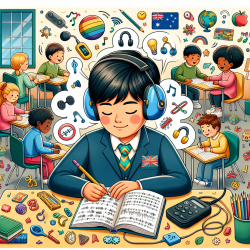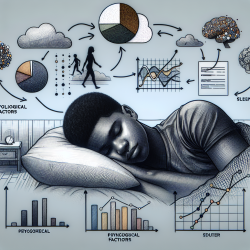Introduction
As a Special Education Director, staying informed about the latest research and technological advancements is crucial for enhancing the educational experience of students with special needs. One such advancement is the use of noise cancelling earbuds to improve auditory attention in children with Autism Spectrum Disorder (ASD). A recent study, titled "Effectiveness of Noise Cancelling Earbuds in Reducing Hearing and Auditory Attention Deficits in Children with Autism," provides valuable insights into how these devices can be implemented in educational settings.
Understanding the Research
The study explored the impact of Nuheara IQbuds Boost, Bluetooth-enabled noise cancelling earbuds, on auditory attention and classroom listening in children with ASD. The research involved 13 children aged 6-13 years, all diagnosed with ASD and possessing normal hearing levels. The participants underwent assessments with and without the earbuds, focusing on speech perception and auditory attention in noisy environments.
Key Findings
- While the earbuds did not significantly improve speech perception in noise, they notably enhanced auditory attention and classroom listening behaviors.
- Children using the earbuds demonstrated significant improvements in auditory attention, as measured by the Integrated Visual and Auditory Continuous Performance Task.
- The two-week trial period showed a marked improvement in classroom listening and communication, as reported by teachers using the Listening Inventory for Education-Revised questionnaire.
Implications for Practitioners
For practitioners in special education, these findings suggest that noise cancelling earbuds can be a viable alternative to traditional remote microphone systems. The earbuds offer several advantages:
- Affordability: Compared to remote microphone systems, Bluetooth earbuds are more cost-effective, making them accessible for a broader range of students.
- Stigma Reduction: Earbuds are less conspicuous than traditional assistive listening devices, potentially reducing the stigma associated with their use.
- Versatility: These devices can be used in various settings, including classrooms and social environments, without the need for a secondary transmitting device.
Encouraging Further Research
While the study provides promising results, further research is needed to explore the long-term efficacy and usability of noise cancelling earbuds in real-world settings. Practitioners are encouraged to consider these devices as part of a comprehensive approach to addressing auditory attention deficits in children with ASD.
Conclusion
Incorporating noise cancelling earbuds into the educational toolkit for children with ASD can significantly enhance their auditory attention and classroom participation. By staying informed and open to new technologies, practitioners can continue to improve educational outcomes for students with special needs.
To read the original research paper, please follow this link: Effectiveness of Noise Cancelling Earbuds in Reducing Hearing and Auditory Attention Deficits in Children with Autism.










